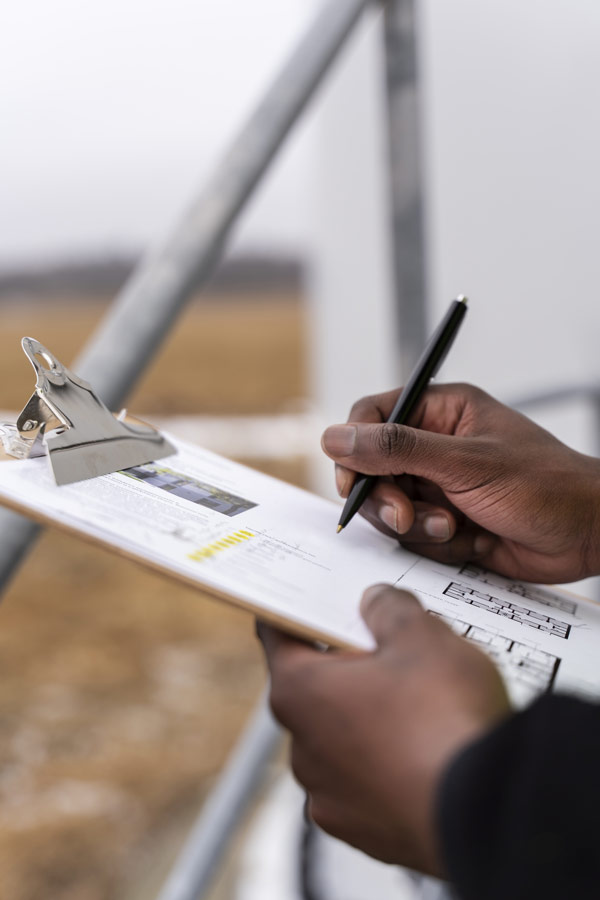Best Practices for Making Sure Safe and Comprehensive Lead Offense Abatement
Addressing lead offense reduction calls for a multi-faceted method to make sure both security and compliance. It's the final clearance procedure, entailing complete assessments and lab testing, that truly verifies a lead-free setting, making certain long-lasting safety. How do these techniques adjoin to guarantee comprehensive lead reduction?

Initial Evaluation
Conducting a preliminary evaluation is a vital very first step in lead offense abatement. This stage includes a comprehensive evaluation of the property to recognize the presence, level, and particular areas of lead-based dangers. Qualified experts, such as certified lead examiners or risk assessors, must perform a thorough site assessment, utilizing devices like X-ray fluorescence (XRF) analyzers to properly discover and gauge lead concentrations in paint, dirt, soil, and water.
The evaluation has to also consist of a review of the structure's background, previous reports, and any type of issues or health problems reported by occupants - Lead Removal Contractors. Documenting the searchings for diligently is vital, as these documents create the basis for developing an efficient reduction strategy. An extensive analysis also involves sampling and lab evaluation, which are critical to verify the existence of lead and overview succeeding activities
Furthermore, it is necessary to connect the outcomes transparently to all stakeholders, including home proprietors, occupants, and governing authorities. By making certain that the initial assessment is conducted with precision and rigor, professionals can lay a solid foundation for a targeted and efficient lead abatement process, ultimately safeguarding public health and ensuring compliance with regulatory standards.
Proper Control
Correct containment is crucial to protect against the spread of lead pollutants during reduction activities. Effectively taking care of containment decreases the danger of lead dust and particles migrating to non-work locations, thus safeguarding both the setting and individuals outside the prompt work area.

Routine inspections of the control location are needed to check for violations or weak points in the barrier. Any kind of determined concerns ought to be without delay addressed to keep the integrity of the control. By sticking to these methods, reduction projects can successfully regulate lead contamination and reduce affiliated health dangers.
Employee Protection
Making sure worker security is vital during lead abatement jobs to protect against work direct exposure to unsafe lead particles. Necessary actions include making use of individual safety equipment (PPE) such as respirators, gloves, and full-body fits particularly made to block lead dust and fumes. Workers must undertake thorough training on the correct usage and maintenance of PPE, including in shape screening for respirators to make certain optimum efficacy.
Engineering controls, such as local exhaust ventilation systems, are important in decreasing air-borne lead focus in the job setting. Management controls should also be implemented, including limiting the duration of exposure and rotating workers to reduce individual exposure times. Regular clinical security and organic surveillance are crucial for very early discovery of lead absorption, making it possible for prompt intervention and treatment.
Additionally, establishing a decontamination protocol is site link essential. Employees need to adhere to rigid purification procedures before breaks and at the end of their change to stop lead dirt from being brought outside the workspace. This consists of thorough hand and face cleaning with lead-specific cleaner and changing out of infected garments.
Careful Clean-up
Maintaining a secure job environment extends past worker protection and incorporates careful cleanup to ensure lead fragments are completely removed from the website. The process of thorough clean-up is vital in preventing the recontamination of the moderated area and safeguarding both existing and future residents.
To attain a detailed cleanup, all job areas need to be systematically sanitized. This involves using specialized HEPA (High-Efficiency Particulate Air) hoover and wet-wiping techniques to catch and remove fine lead dirt that may have chosen surfaces. It is imperative to clean up all straight surfaces, consisting of floors, window sills, and countertops, in addition to upright surfaces that may have entraped lead particles.
Workers have to wear proper individual protective devices (PPE) throughout cleanup to prevent direct exposure to recurring lead dust. Utilized cleansing products such as wipes, sponges, and mop heads ought to be taken care of based on harmful waste disposal laws.

Last Clearance
Last clearance is the important wrapping up phase of lead abatement that figures out whether the website is safe for reoccupation. This important action entails extensive assessment and screening to validate that all lead hazards have been successfully removed. The procedure starts with an aesthetic inspection by a certified lead-based paint examiner or danger assessor to make sure no noticeable dirt or particles continues to be. This is followed by collecting dust wipe samples from various surfaces, including floors, windowsills, and other horizontal surfaces. Lead Removal Contractors.

Last clearance testing not just secures future passengers but additionally makes sure compliance with local, state, and government policies. It offers as a documented recognition of the abatement contractor's adherence to sector best techniques. Guaranteeing a thorough and effective final clearance is crucial in protecting visit this website public wellness and promoting trust in the abatement procedure.
Final Thought
Making certain risk-free and detailed lead infraction reduction necessitates a complex approach including first Click This Link evaluations with innovative detection techniques, reliable containment methods, rigorous worker security methods, and precise clean-up treatments. The final clearance phase, including detailed evaluations and research laboratory screening, is essential to verify conformity with EPA criteria. Adherence to these best methods assures a secure environment for residents, minimizes wellness risks, and supports regulative needs, therefore promoting public health and security in lead-affected areas.